FICM Rally
Rallymen waited 32 years for the FIM to create a meeting for them
The FIM rally very first international meeting did not see the light of day until August 1936, and more precisely on the occasion of the Summer Olympics, the Games of the XIth Olympiad of the modern era, celebrated from 1 to 16 August in Berlin, Germany. This was the second time the German capital had been chosen as the host country (the 1916 Olympic Games had been cancelled because of the First World War).
Grandmother FIM claims to have been founded in 1904. If that's really the case, then it took taken 32 years for it to organise a motorcycling event for touring motorcyclists from all over the world.
It's true that for the vast majority of motorcycling federations representing various countries around the world, compared with speed racing and the various off-road disciplines, motorbike touring has always been considered the least loved and least looked after branch of the family. The cynical may suggest that this is because this particular discipline doesn't bring in enough money for them to deign to take a closer interest.
But before we get back to the heart of the matter, that very first FIM rally in 1936, let's take this opportunity to remember how the very first international federation, the FICM (Fédération Internationale des Clubs Motocyclistes), the elder sister of today's FIM, emerged from nothing and was finally born on 21 December 1904, at a table in the very chic Ledoyen restaurant in Paris.
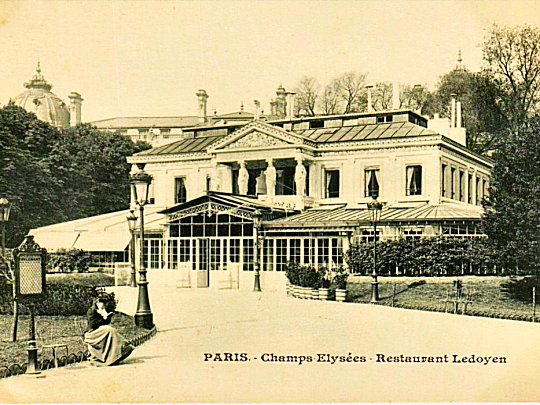
It was here, in the salons of this prestigious neoclassical restaurant where Napoleon and Joséphine de Beauharnais are said to have met; also the favourite haunt of artists and writers such as Degas, Monet, Zola, Flaubert and Guy de Maupassant; that the FICM, the very first international federation which was later to become the FIM, was set up
Let us thank our ancestors for laying the foundations
As soon as the first engines were designed to power machines of all kinds, our ancestors, who had a competitive spirit in their blood, obviously wanted to battle it out with each other on the roads and circuits of the time; this was already well before the year 1900 arrived on the scene, as the photographic document, dating from 1899, below shows so well.
The date was 5 August 1899. On a fine summer's day, the photographer immortalised for all time the riders and their machines at the start of the petrol tricycle race at Belves, in the Dordogne
In the early 1900s, there was certainly no shortage of motorbike races in France.
The same was true at international level, with events such as the famous Paris-Berlin in 1901, the Paris-Vienna in 1902 and the Paris-Madrid in 1903.
The race that changed motorbike sport
25 September 1904
1904 was a particularly fruitful and decisive year for the development of French motorcycling, thanks in part to the huge amount of work done to promote the sport by the enthusiastic Motocycle Club de France, which had just been founded the previous year.
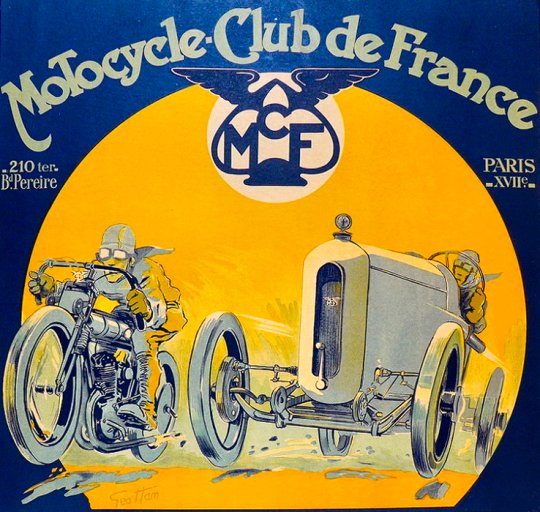
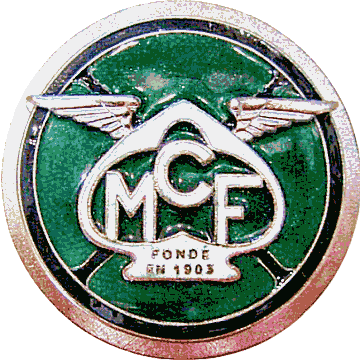
Founded in 1903, the now defunct Motocycle Club de France was one of France's most illustrious clubs, responsible for a multitude of events
This club would set up for the first time an international competition called the 'Coupe Internationale du Motocycle Club de France' (in a way the forerunner of what the Grand Prix de France is today) in which 5 nations would take part: Austria, Denmark, Germany, Great Britain and France.
The competition would take place on 25 September 1904 in Dourdan, in the Essonne region south-west of Paris, where a number of motorbike events had already been held in the past.
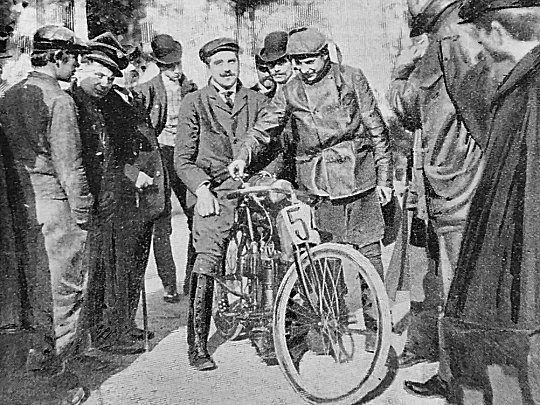
1903 - In Dourdan, world record holder Dominique Lamberjack on his Griffon motorbike
The famous French weekly illustrated sports magazine of the time, 'La Vie au grand air', even devoted the cover page of its magazine to the 'French qualifiers' on 15 September 1904.
In the pages of the magazine 'l'Auto', published on 22 September, three days before the grand final of the International Cup, readers could read the following lines:
From the very first year, the Motorcycle Club de France has succeeded, by dint of hard work and perseverance, in pulling off the feat of setting up a major race and achieving real success. The whole of the European sporting press is eagerly awaiting the results of this event, which should go some way to asserting the supremacy of the motorbike industry, and our only regret is to note the absence of the Belgians and Italians, who would have added an even more powerful interest to the event.
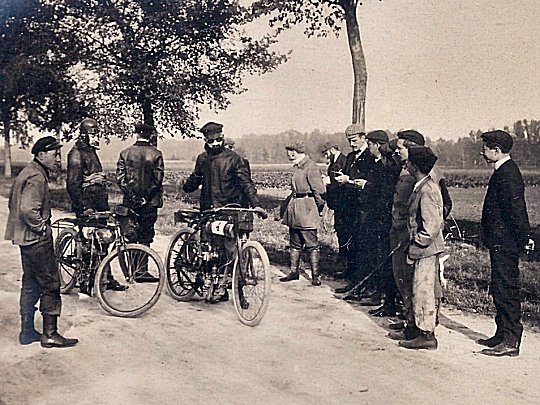
Circa 1904 - Two riders at a race control post
With this 'Coupe Internationale du Motocycle Club de France' on 25 September 1904, the French public finally became aware, via the media of the time, that a new sport had been born: that of the motorcycle, which at the time was described as nothing more than the poor man's car. From then on, its popularity grew by the day.
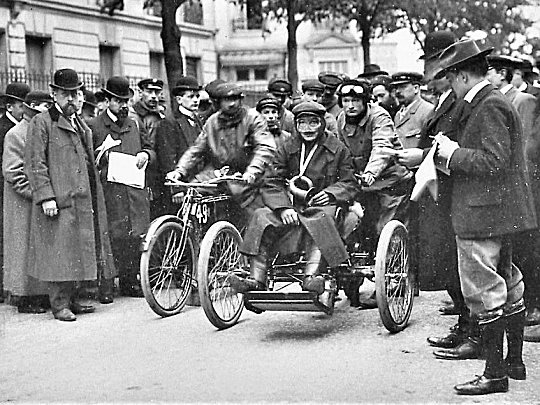
1904 - At the start of the Paris-Bordeaux-Paris, one of the many endurance races for touring motorbikes at the time. Competitors started in pairs, minute by minute. Here at the start, La Foudre (49) and Doué (50)
A victory that did not please everyone
By the way, who won this first 'Coupe Internationale du Motocycle Club de France', a sort of unofficial world championship? France! Taking first place on the podium, thanks to the victory of one of its riders, Léon Demeester.
What history records 120 years later about this first major international competition is that not everyone was in favour of it, and disputes arose over race conditions.
So much so that the five participating countries decided to meet in Paris three months later, on 21 December 1904, to resolve all the dilemmas and set up once and for all a genuine international federation that would be the governing body of motorbike sport and the world authority of motorcycling.
The meeting began at 3.00 pm in the lounges of the Ledoyen restaurant in the presence of eight delegates representing their respective nations. The FICM (Fédération Internationale des Clubs Motocyclistes - International Federation of Motorcycle Clubs) was created that afternoon and its first elected president was Mr. De Lahausse of the Motocycle Club de France.
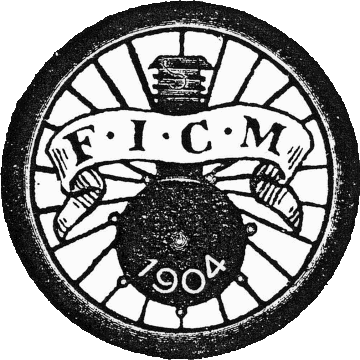
But the federation's existence could well have been short-lived when, in July 1906, at the International Cup in Patzau, Bohemia, delegates from the four participating countries - Austria, France, Germany and Great Britain - unanimously decided to dissolve the federation.
It could have disappeared forever had it not been saved by a simple question of procedure. In the end, the FICM avoided dissolution, simply remaining inactive until 1912, when the British federation (ACU) gave it a second wind and the chance to exist once again.
The Auto-Cycle Union of Great Britain
to the rescue of the FICM
On 28 November 1912, the Auto-Cycle Union of Great Britain took the initiative of convening a meeting at London's Olympia, attended by delegates from Belgium, Denmark, France, Great Britain, Italy, the Netherlands and the United States.
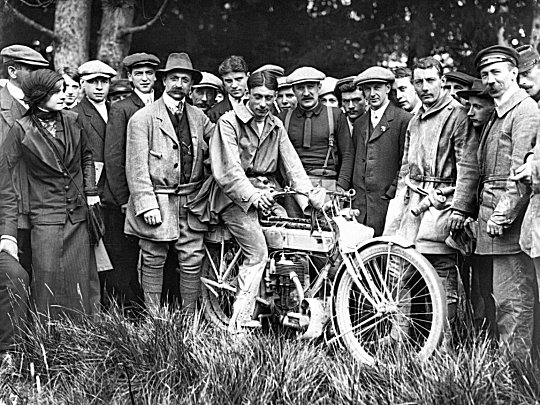
1912 - A few months earlier, in August, the MCF Grand Prix de France was held on the 30km Fontainebleau road circuit. The rider seen here on his Triumph machine is Devay, who finished 2nd in the 500cc category behind the winner, Englishman Oliver Godfrey on an Indian
The FICM was re-established to control and develop the sporting and tourist aspects of motorcycling and to help motorbike users in these areas.
Two weeks later, a congress was held in Paris, attended by Germany, Austria and Switzerland as well as the countries already mentioned. At the end of the Paris congress, the Marquis de Mouzilly St-Mars was elected Honorary President of the FICM and the Honourable Sir Arthur Stanley MP was elected President.
Subsequently, the number of national associations affiliated to the FICM rose from 10 in 1912 to 30 on the eve of the Second World War. In 1946, after the war, the FICM resumed its activities.
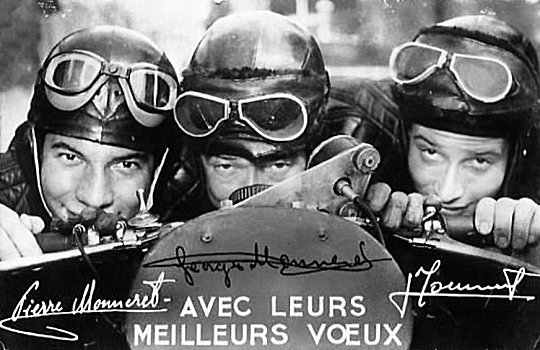
1946 - New Year's greetings card from the Narbonne motorcycle club featuring the French aces of the time, George and Pierre Monneret
But it was in 1949 that the FICM changed its name to what is known today as the Fédération Internationale Motocycliste (FIM).
Before Berlin, there was Brussels
The history of FIM rallies gives the year 1936 as the date of the very first meeting of its kind, organised as we know in Berlin.
Berlin 1936 - A view of the participants
It is omitted that there was in fact an experimental rally the previous year, which took place in the summer of 1935, in Brussels, Belgium, again organised by the FICM.
The concept of this meeting was so well received by the motorbike touring community that it encouraged the federation to repeat it and make it a regular event.
Berlin 1936 - Too many uniforms for my taste for a motorcycle meeting...
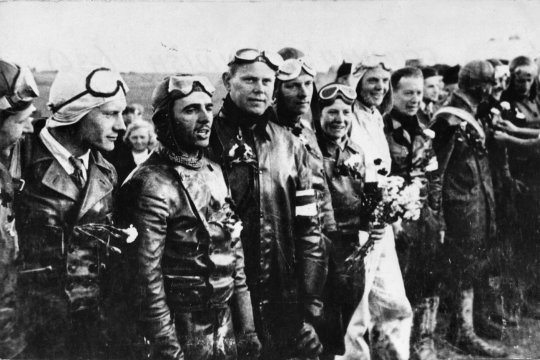
Berlin 1936 - Close-up of the Estonian delegation
As for the official 1936 rally in Berlin, it attracted around a hundred participants representing eleven different countries to German soil. Estonia was one of them, winning the event; their first and only victory to date.
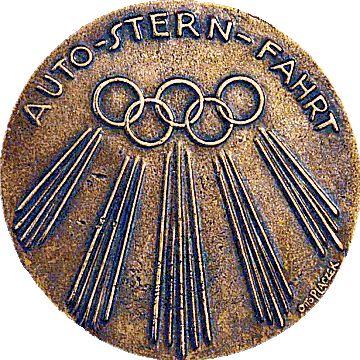
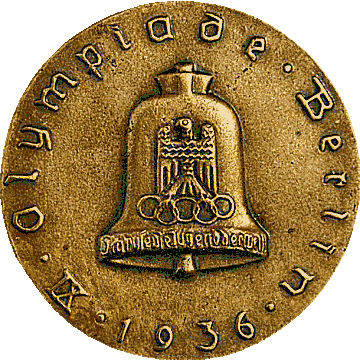
Front and back of the medal commemorating the 1936 Berlin motorbike rally
The next FICM rallies at the end of the 1930s took place successively in Paris (1937), Prague (1938) and Zurich (1939).
The war interrupted the FICM rally. It was reborn as the FIM rally, the first held in 1950 in the Netherlands.
- Jean-Francois Helias